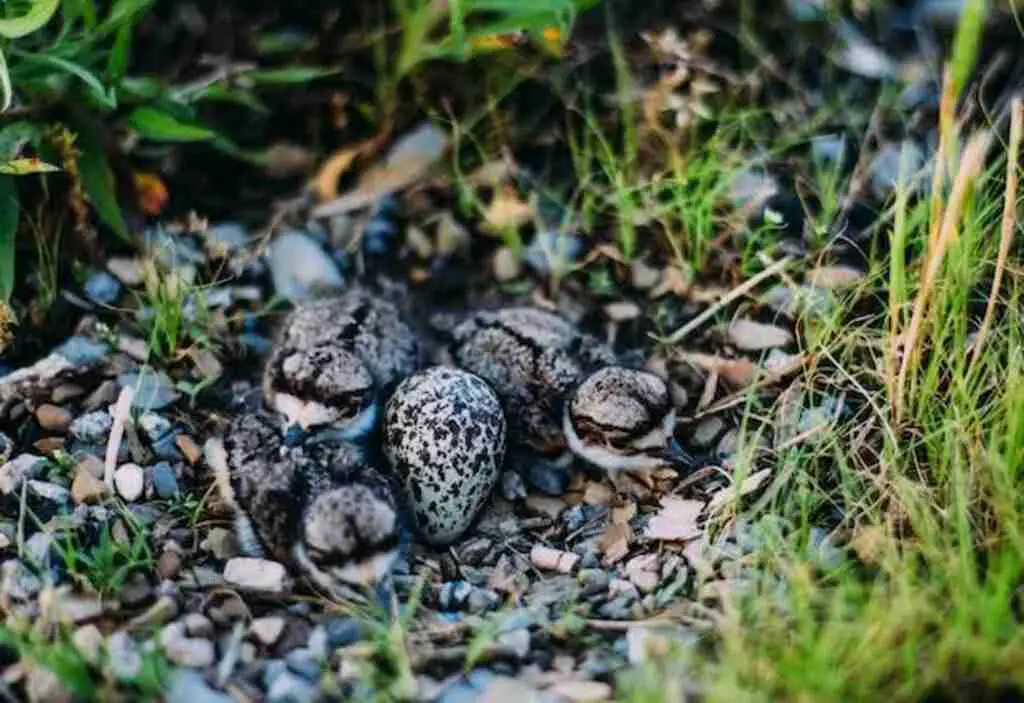Bird egg hatching is a fascinating process, and understanding the incubation period is crucial for successful breeding and conservation efforts. The incubation period refers to the time it takes for a bird egg to hatch, and varies depending on several factors.
In this article, we will explore the different factors that influence the hatching time for bird eggs, typical incubation periods for common bird species, the stages of bird egg development, and the roles of parental birds in incubation. We will also address the impact of environmental and human factors on bird egg hatching.
Table of Contents
- 1 Key Takeaways:
- 2 How Long for Bird Eggs to Hatch?
- 3 Factors Affecting Bird Egg Incubation Period
- 4 Typical Incubation Periods for Common Bird Species
- 5 The Process of Bird Egg Development
- 6 Parental Roles in Incubating Bird Eggs
- 7 Incubation Techniques and Adaptations
- 8 Environmental Influences on Bird Egg Incubation
- 9 Human Impacts on Bird Egg Hatching
- 10 Fun Facts about Bird Eggs
- 11 Conclusion
- 12 FAQs: How Long for Bird Eggs to Hatch?
- 12.1 How long does it take for bird eggs to hatch?
- 12.2 What factors can affect the incubation period of bird eggs?
- 12.3 Can the incubation time vary among different bird species?
- 12.4 What are the stages of bird egg development?
- 12.5 How do male and female birds share incubation responsibilities?
- 12.6 What unique incubation techniques and adaptations do birds have?
- 12.7 How do environmental factors impact bird egg incubation?
- 12.8 What are the potential human impacts on bird egg hatching?
- 12.9 What are some interesting facts about bird eggs?
- 13 Author
Key Takeaways:
- The incubation period refers to the time it takes for a bird egg to hatch.
- Various factors can influence the hatching time for bird eggs, including bird species, environmental conditions, and parental behaviors.
- Understanding the typical incubation periods for different bird species can aid in breeding and conservation efforts.
- The stages of bird egg development and parental roles in incubation are crucial to successful hatching.
- Environmental and human impacts can disrupt the natural incubation process and hatching success of bird eggs.
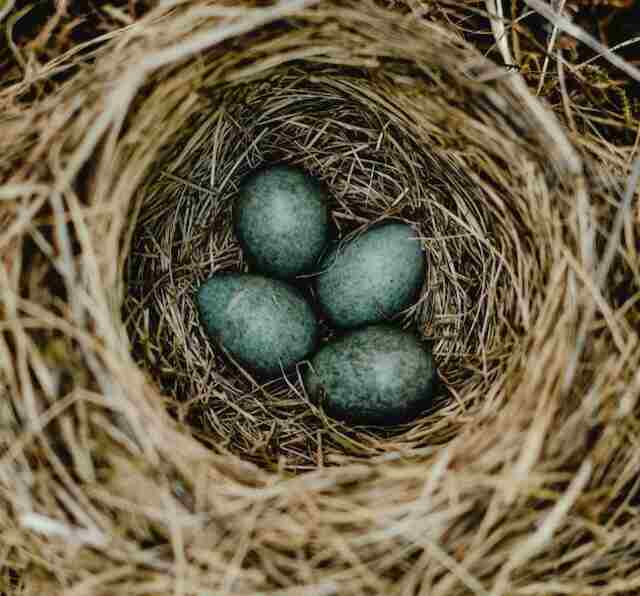
How Long for Bird Eggs to Hatch?
The incubation period for bird eggs can vary greatly depending on the species of bird. Generally, the incubation period can range from 10 to 80 days. For example, the incubation period for chicken eggs is around 21 days, while the incubation period for albatross eggs can be as long as 80 days. The average incubation period for most bird species is around 14–30 days.
Factors Affecting Bird Egg Incubation Period
The duration of bird egg incubation can vary greatly, depending on a number of factors. Understanding these factors can help bird enthusiasts and researchers predict hatching times and monitor the progress of developing eggs. Here are some of the main factors that can influence the average duration of bird egg hatching:
Bird Species
One of the most significant factors affecting bird egg incubation period is the species of bird itself. Different species have different hatching times, with some birds taking as few as 10 days to hatch, while others may take well over a month. This can vary based on factors such as the bird’s size, egg size, and metabolic rate.
Environmental Conditions
The surrounding environment can also play a role in the duration of bird egg incubation. Temperature, humidity, and altitude can all impact the hatching process. For example, birds living in colder environments may take longer to hatch their eggs due to lower temperatures. Additionally, humidity levels can affect egg development, with some birds preferring higher humidity levels while others require drier conditions.
Parental Behaviors
The behavior of the parents also plays a role in the incubation period of bird eggs. Some birds constantly tend to their eggs, while others only check on them periodically. In some cases, one parent may take on the majority of the incubation duties, while the other parent focuses on foraging or other activities.
These are just a few of the many factors that can influence the hatching time for bird eggs. By understanding these factors, bird enthusiasts and researchers can better predict when eggs will hatch, and monitor the development of their feathered friends.
Typical Incubation Periods for Common Bird Species
Knowing the time it takes for a bird egg to hatch is essential for bird enthusiasts and researchers alike. The bird egg hatching duration varies from species to species and can range from a few days to several months. In this section, we will provide you with information about the average incubation periods for some common bird species.
| Bird Species | Incubation Time |
|---|---|
| American Robin | 12-14 days |
| Chicken | 21 days |
| Duck | 28-35 days |
| Mallard | 25-26 days |
| Penguin | 30-67 days |
It’s important to note that these timelines are just averages. Incubation time for bird eggs can vary based on a variety of factors, including environmental conditions and parental behaviors.
Some species, such as chickens, have been selectively bred for thousands of years by humans, leading to a consistent incubation period of 21 days. In contrast, penguins have a much longer incubation period, which is due to their unique nesting conditions in Antarctica.
Understanding the typical incubation period for a given bird species is essential for bird watchers, conservationists, and researchers to monitor the health of bird populations and ensure the breeding success of endangered species.
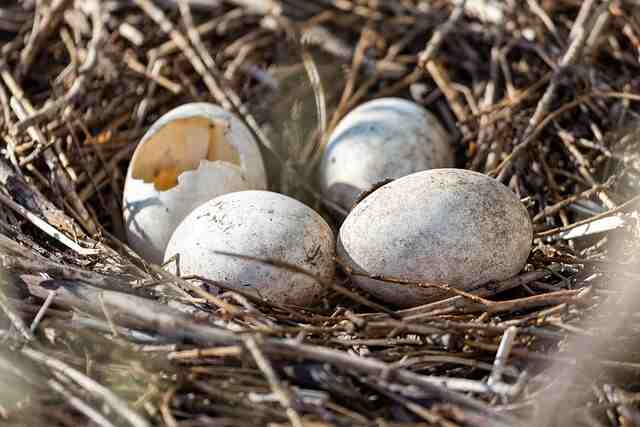
The Process of Bird Egg Development
Bird egg development is a complex process that spans over several days, from fertilization to hatching. The exact timeline for each stage of development may vary among bird species, but the overall sequence of events remains relatively consistent.
Stage 1: Fertilization
The process of bird egg development begins when a female bird’s reproductive tract releases an egg cell. If this egg cell is fertilized by a male bird’s sperm, it travels down the oviduct and begins to develop into an embryo inside the eggshell.
Stage 2: Germinal Disc Formation
Upon fertilization, a small white dot known as the germinal disc forms on the surface of the egg yolk. This disc contains all the genetic material necessary for the development of the embryo and will eventually become the embryo’s head.
Stage 3: Cleavage
During this stage, the zygote divides into two cells, then four, then eight, and so on, until a blastodisc is formed. This small disc of cells will eventually become the embryo.
Stage 4: Formation of the Embryo and Yolk Sac
As the blastodisc continues to divide and grow, it eventually develops into an embryo with recognizable features, such as a head, body, and tail. At the same time, a yolk sac forms alongside the embryo. This sac contains the nutrients necessary for the developing embryo to grow and develop.
Stage 5: Chorioallantoic Membrane Formation
As the embryo continues to develop, a thin membrane known as the chorioallantoic membrane (CAM) begins to form around it. This membrane helps to exchange gases between the developing embryo and the outside environment and eventually becomes the lining of the eggshell’s air chamber.
Stage 6: Beak and Feather Formation
As the embryo nears the end of its development, it begins to form a beak and feathers. These structures will be crucial for the chick’s survival outside of the egg.
Stage 7: Pipping
Pipping refers to the process of the chick breaking through the eggshell to hatch. This typically occurs when the chick has fully developed and is ready to emerge from the egg. The chick uses a small, sharp egg tooth to break through the shell and push its way out.
Understanding the timeline of bird egg development is crucial for bird enthusiasts and researchers alike. By knowing the various stages of development, scientists can better understand the physiological processes behind hatching and the factors that influence it.
Parental Roles in Incubating Bird Eggs
Both male and female birds play an important role in incubating their eggs to ensure successful hatching. However, the extent of their involvement and responsibilities can vary among different species.
In some bird species, such as penguins and albatrosses, both parents take turns incubating the egg. The male may take the initial shift, while the female goes out to forage for food. They then switch roles, allowing the female to incubate the egg while the male goes to hunt. This careful coordination ensures that the egg is never left unattended, increasing the chances of survival for the developing chick.
Other bird species, such as the male Emperor Penguin, take on the sole responsibility of incubating the egg. The female lays the egg and then leaves to forage for food, leaving the male to keep the egg warm in the harsh Antarctic winter. The male will incubate the egg for up to two months, during which time he cannot hunt for food. Instead, he relies on his fat reserves until the female returns to relieve him of his duties.
During incubation, both male and female birds must maintain a constant temperature and humidity level around the egg. They may use their bodies to regulate temperature, fluffing their feathers to add warmth or water droplets to cool the egg. They may also use their beaks to rotate the egg, ensuring that all parts of the developing embryo are receiving adequate oxygen and nutrients.
Overall, the parental roles in incubating bird eggs are crucial to the successful hatching of the egg. By working together to provide the necessary conditions for the embryo to develop, they are able to bring new life into the world.
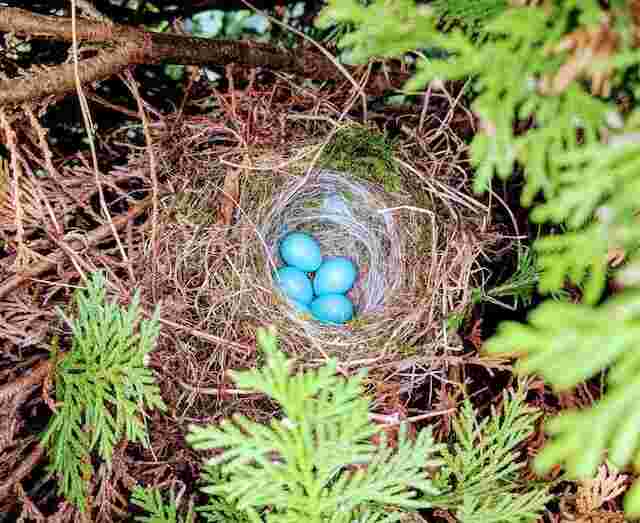
Incubation Techniques and Adaptations
While most birds incubate their eggs by sitting on them, there are several techniques and adaptations that different bird species use to ensure successful hatching.
Brood Parasitism
Some bird species, such as cuckoos and cowbirds, practice brood parasitism, which is when they lay their eggs in the nests of other bird species, leaving the host species to incubate and raise their offspring. This adaptation allows the parasitic species to pass on their genes without having to invest energy in incubation, freeing them up to focus on other activities such as foraging or migration.
Incubation Shifts and Division of Labor
Many bird species take turns incubating their eggs, with the male and female sharing responsibilities. In some species, such as the emperor penguin, males take sole responsibility for incubating the egg while the female goes off to forage for weeks at a time. Other species, such as the common murre, have a division of labor where both parents incubate the egg together but take turns foraging for food.
Infrared Vision
Some bird species, such as nightjars and some species of owl, have the ability to see infrared light, allowing them to detect the heat signature of their eggs. This adaptation enables them to maintain a constant temperature around the egg, even in low light or darkness.
Overall, the various incubation techniques and adaptations used by different bird species highlight the diversity and ingenuity of avian parental behavior.
Environmental Influences on Bird Egg Incubation
The incubation period of bird eggs can be heavily influenced by environmental factors. The temperature, humidity levels, and predation risks can all play a significant role in determining the hatching time for bird eggs. In this section, we will explore how different environmental factors can affect the development timeline of bird eggs.
Temperature
The temperature of the incubation site can have a significant impact on the hatching time of bird eggs. Different bird species have specific temperature requirements for their eggs to develop properly. If the temperature falls outside of the optimal range, it can slow down or even stop the development process entirely.
In hotter environments, the incubation period may be shorter, while cooler temperatures may lead to longer incubation periods. Climate change can also affect the temperature and precipitation patterns in certain regions, which can have direct consequences for birds that breed there.
Humidity
The level of humidity surrounding the egg can also influence the incubation process. High humidity levels can cause the egg to become too wet, potentially leading to mold or bacterial growth. On the other hand, low humidity levels can cause the egg to dry out, leading to developmental issues or even death of the embryo.
Most birds maintain the necessary humidity levels by sitting on the eggs and providing the necessary moisture with their feathers. However, in areas with low humidity levels, some birds may have to seek out damp habitat areas or wetlands to incubate their eggs successfully.
Predation Risk
The risk of predation can also have an impact on the development timeline of bird eggs. If the eggs are more exposed to predators, parents may spend less time incubating them to avoid attracting attention.
For example, birds that nest on the ground, such as shorebirds, may have shorter incubation periods because they need to minimize the amount of time spent away from their eggs. In contrast, birds that nest in more protected environments, such as tree cavities or nests high above the ground, may have longer incubation periods due to lower predation risks.
Overall, environmental factors can have a significant influence on the incubation process and hatching time for bird eggs. It is essential to understand the unique requirements of each bird species and the various ways in which they adapt to changing environmental conditions.
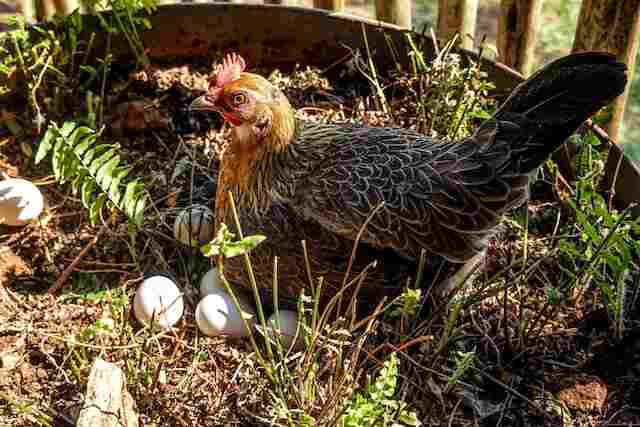
Human Impacts on Bird Egg Hatching
The natural incubation process of bird eggs can be disrupted by a variety of human activities. Habitat destruction, pollution, climate change, and other factors can all have an impact on the hatching success of bird eggs.
One major way that humans can disrupt the egg incubation process is through habitat destruction. As natural habitats are destroyed or altered, bird species may lose the necessary conditions for successful incubation. This can lead to reduced hatching success rates and lower bird populations overall.
Pollution is another significant threat to bird egg hatching. Chemicals and pollutants can contaminate eggs and harm developing embryos. This can lead to deformities, low hatching rates, and even death for the developing chicks.
Climate change is also affecting bird egg hatching. As temperatures rise, the natural incubation process can be disrupted, and the hatching time for eggs may be altered. Changes in precipitation patterns and other weather patterns can also have an impact. Some bird species may be forced to change their breeding habits or migrate to new areas as a result of these changes.
Overall, it is important to recognize the ways in which human activities can impact the natural incubation process for bird eggs. By taking steps to reduce pollution, habitat destruction, and other harmful activities, we can help preserve the natural world and protect bird populations for future generations.
Fun Facts about Bird Eggs
Bird eggs are a fascinating topic, and there are many interesting facts to learn about them. Here are some fun facts to help you appreciate the wonder of these amazing structures:
- Eggshell patterns: The colors and patterns of bird eggshells vary greatly among species. Some birds, such as the American robin, have blue-green eggs with speckles, while others, like the killdeer, lay eggs with mottled brown markings to blend in with their surroundings.
- Egg sizes: Bird eggs come in a wide range of sizes, from tiny hummingbird eggs that measure less than half an inch long to the massive ostrich eggs that can weigh up to three pounds.
- Egg composition: A bird egg is made up of several parts, including the yolk, albumen (or egg white), and chalaza, which holds the yolk in place. The eggshell is made of calcium carbonate and is porous, allowing oxygen to enter and carbon dioxide to exit.
- Incubation temperature: The temperature at which a bird egg is incubated can determine the outcome of hatching. Most birds’ eggs require a temperature of around 99-101 degrees Fahrenheit, but some species, like the mound-building megapode, incubate their eggs at much higher temperatures of up to 113 degrees.
- Egg-laying habits: Some birds, such as the common tern, lay their eggs in shallow depressions on the ground, while others, like the house sparrow, build elaborate nests to hold their eggs. The Australian brush-turkey builds a massive incubation mound out of leaves and other materials.
- Incubation period: The average duration of bird egg hatching varies greatly among species. Some birds, such as the zebra finch, have an incubation period of only 12-14 days, while others, like the emperor penguin, can take up to 64 days to hatch their eggs.
With all these fascinating facts, it’s easy to see why bird eggs are so compelling. From their diverse colors and patterns to the unique way they are incubated, bird eggs are truly a wonder of nature.
Conclusion
Understanding the incubation period for bird eggs is crucial for ensuring the successful hatching of new life. The duration of hatching can be influenced by various factors such as bird species, environmental conditions, and parental behaviors. It is important to note that the incubation time can differ greatly among species, with some taking only a few days while others may take several weeks.
During the process of bird egg development, significant changes occur within the egg, leading up to the point of hatching. Male and female birds share responsibilities in incubating their eggs, taking turns to provide the necessary conditions for successful hatching.
Birds have unique incubation techniques and adaptations to ensure the proper development and hatching of their eggs. However, environmental factors such as temperature, humidity, and predation risk can disrupt the natural incubation process and affect the hatching success of bird eggs.
Human activities such as habitat destruction, pollution, and climate change can also have significant impacts on bird egg hatching. It is important for us to take action to preserve the habitats and environments that are crucial for bird species to thrive and reproduce.
Finally, bird eggs are fascinating and have many interesting characteristics and behaviors. From eggshell patterns, sizes, and colors to unique egg-related behaviors exhibited by certain bird species, there is always something new to learn about these incredible creations of nature.
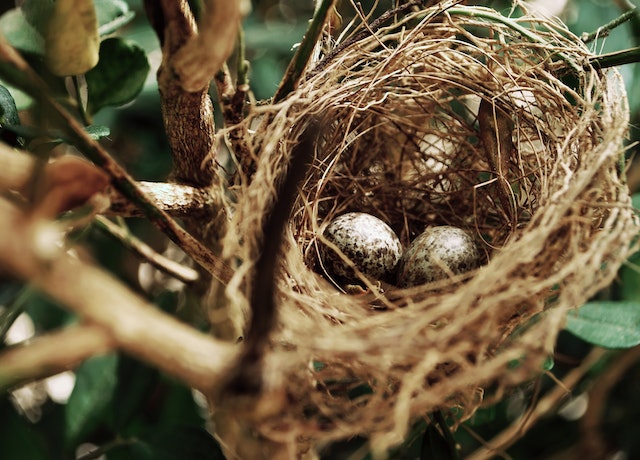
FAQs: How Long for Bird Eggs to Hatch?
How long does it take for bird eggs to hatch?
The incubation period for bird eggs can vary depending on the species. On average, it takes about 12-14 days for small songbirds, 21-28 days for medium-sized birds, and 28-35 days for larger birds.
What factors can affect the incubation period of bird eggs?
Several factors can influence the duration of bird egg incubation. These include the species of bird, environmental conditions such as temperature and humidity, and the behavior of the parent birds.
Can the incubation time vary among different bird species?
Yes, the incubation time can vary significantly among different bird species. Some birds may have shorter incubation periods, while others may have longer ones. It is important to research the specific species of bird you are interested in to determine its incubation period.
What are the stages of bird egg development?
The process of bird egg development includes several stages. After fertilization, the egg undergoes various changes, including cell division, formation of body structures, and the development of feathers. Finally, the chick inside the egg hatches after the incubation period.
In many bird species, both male and female birds take turns incubating the eggs. They have specific roles in maintaining the nest, providing warmth, and protecting the eggs from predators. This shared responsibility helps to ensure a successful hatching.
What unique incubation techniques and adaptations do birds have?
Birds have evolved various techniques and adaptations to enhance the incubation process. Some species may use their body heat to warm the eggs, while others may construct elaborate nests to provide optimal conditions. Certain birds may also incorporate camouflage or protective behaviors to safeguard the eggs.
How do environmental factors impact bird egg incubation?
Environmental factors such as temperature, humidity, and predation risk can affect the incubation process and hatching time of bird eggs. Changes in these factors can influence the overall success of hatching and the survival of the chicks.
What are the potential human impacts on bird egg hatching?
Human activities, such as habitat destruction, pollution, and climate change, can have detrimental effects on the hatching success of bird eggs. These disruptions can alter the environmental conditions necessary for successful incubation and can ultimately threaten bird populations.
What are some interesting facts about bird eggs?
Bird eggs have many fascinating characteristics. They can vary in size, shape, and color, with some species having incredibly colorful or patterned eggs. Additionally, certain birds exhibit unique egg-related behaviors, such as brood parasitism, where they lay their eggs in the nests of other bird species.

